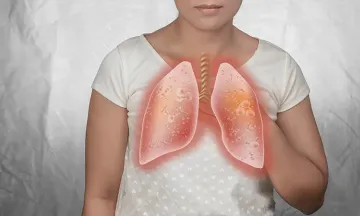Introduction Lung cancer remains the leading cause of cancer-related deaths in the United States, claiming the lives of more than 140,000 Americans annually. While early detection and treatment can significantly improve survival rates, a disturbingly low number of eligible Americans are up to date with recommended lung cancer screenings. Screening Guidelines The United States Preventive
Introduction
Lung cancer remains the leading cause of cancer-related deaths in the United States, claiming the lives of more than 140,000 Americans annually. While early detection and treatment can significantly improve survival rates, a disturbingly low number of eligible Americans are up to date with recommended lung cancer screenings.
Screening Guidelines
The United States Preventive Services Task Force (USPSTF) recommends annual lung cancer screenings for adults between the ages of 55 and 80 who have a history of heavy smoking. Heavy smoking is defined as smoking a pack of cigarettes per day for 30 years, or two packs per day for 15 years.
Screening Rates
According to the Centers for Disease Control and Prevention (CDC), only 18.5% of eligible Americans are up to date with lung cancer screenings. This means that a staggering 81.5% of people who should be screened are not receiving this potentially life-saving test.
Barriers to Screening
Several barriers contribute to the low screening rates, including:
- Lack of awareness: Many eligible individuals are unaware of the USPSTF screening guidelines.
- Fear of radiation: Low-dose chest computed tomography (LDCT), the primary screening method, involves exposure to a small amount of radiation. This can deter some people from getting screened.
- Cost: Lung cancer screenings can be expensive, especially for those without health insurance.
- Lack of access to screening centers: Access to LDCT scanners may be limited in rural or underserved areas.
- Misconceptions: Some people believe that screenings are only necessary for people with symptoms, which is incorrect.

Image by Freepik
Consequences of Low Screening Rates
The low screening rates have severe consequences:
- Delayed diagnosis: Lung cancer is often detected at an advanced stage when treatment options are limited and prognosis is poor.
- Reduced survival rates: Early detection through screening significantly improves survival rates.
- Increased healthcare costs: Treating advanced lung cancer is expensive, putting a strain on healthcare systems.
Call to Action
Improving lung cancer screening rates is essential for reducing the burden of this deadly disease. Healthcare professionals, policymakers, and the public must work together to:
- Increase awareness: Public health campaigns and educational materials should inform people about the importance of screenings.
- Address barriers: Cost-sharing programs, reduced radiation doses, and increased access to screening centers can help overcome common barriers.
- Empower patients: Patients should be informed about their screening options and encouraged to discuss them with their healthcare providers.
- Support research: Ongoing research can develop more effective and accessible screening methods.
Conclusion
The low rates of lung cancer screening among eligible Americans are alarming. By addressing the barriers and promoting awareness, we can significantly increase screening uptake, reduce the number of delayed diagnoses, and save lives. Early detection gives lung cancer patients a fighting chance, and it is imperative that we ensure that everyone who needs a screening has access to one.
















